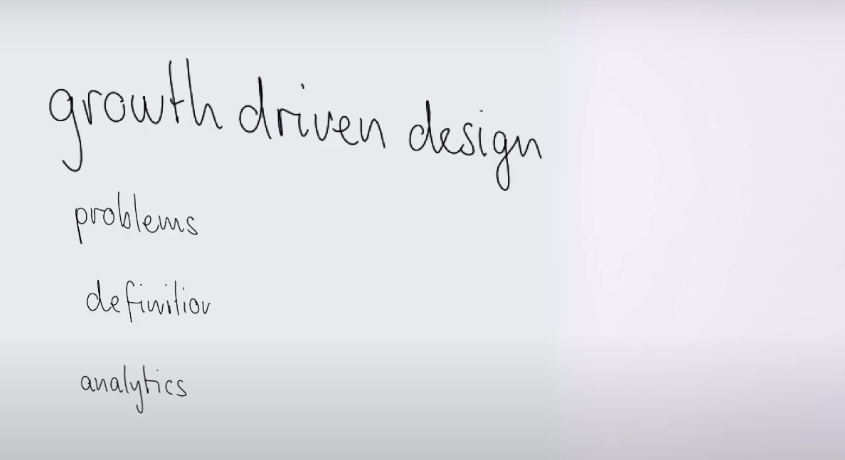An introduction to Growth Engineering and Analytics
What does it tell you?
- Anlytics is the foundation for Growth Driven Design and Growth Engineering
TRANSCRIPT
Hi. Let’s talk a little bit here on the role of analytics. There’s lot of different aspects to growth engineering and growth driven design as we’ve seen. There’s a lot about the processes and the tools that you use. You’re going to need engineering and consulting and design, however, there’s one thing which is analytics and the ability to measure, that goes through all of them.
The first thing you need to understand is that there’s multiple levels of analytics. You want to know how many visitors you have. Quantitative data meaning, how many page views, or how many actions get taken. That’s the first step.
The second level is, what are the [inaudible 00:43] section doing, and here we’re talking about, what path are they taking across the website? How they’re interacting with it and not just how many people, but in what sequences, part of this also are things like code conversion funnels, et cetera.
Finally, the quality of data, which means why did they do it? Why is somebody looking at it and then leaving? You can tell this from just looking at your bounce rate or looking at conversion. You need to know the intention, you need to understand the psychology of the user, and this is all part of measuring and analytics.
Here comes big problem, usually what we’ve seen from set up is that companies use one or another analytics tool. The reality of it really means that you need multiple analytics tools to cover these three aspects that are very important to be able to take data driven decisions.
If you look at this overview for a second, you can see that on one side we have these different columns that you see, like this one. How many visitors do I have? Who are the visitors? What are the visitors doing? Why do they do it? Then better understand the user behavior, the business matrix behind it or that they produce.
We can see that there’s different tools such as Google Analytics, Hubspot Analytics in this case, Hotjar, and things like Kissmetrics, and Mixpanel. Without going into detail you realize really quickly that none of these tools, not a single tool really covers all the aspects of analytics that you need to cover.
The important recommendation is, if you get started with growth engineering or growth driven design, make sure your analytics are set up correctly. That means that it’s just not enough to just go ahead and install the tracking code, but you need to do things like configure goals and funnels, set up feedback surveys, and recruit data testers, super fundamental.
Then in the next step, focus on action. Do not analyze and look at all the data, but try to figure out how you can break your data down into pieces that allows you to then take actions. One good approach is really to think about it, what are drivers, what drives people to your site, what drives people to take action. The hooks, what pulls them in, what makes them converge and in the end, what are the barriers, what inhibits them from doing things?
If you start looking at all of the data that you’re gathering, always ask yourself, what question can I answer? Does it allow me to identify barriers, hooks, or drivers? And then build cycles to reinforce or remove them. Let’s summarize what we’ve learned here. First of all, focus on taking better data driven decisions, gut feeling is good, data is better.
Focus resources on the best hypothesis. Your investments are as good as your hypothesis. It doesn’t matter how many data you have, if your hypothesis is bad, it just doesn’t lead to anything. Measure the impact, again, there’s no good in measuring, there’s no good in analyzing and building hypothesis if you can’t test it and then prove or disregard the impact.
Then finally, repeat, repeat, repeat. It’s very important. It’s what again creates this culture of growth. They’re generation of habits and processes that lead to a culture in your organization to promote this engineering approach, this growth driven design approach to build and extend your website. Thank you for watching. My name is Tim Delhaes. I’m Co-Founder and CEO of InboundLabs.

From Idea to Digital Product
Be assured that at the end of this journey you will re-emerge with more clarity, see new opportunities and threats, and hopefully have your own vision of where these technologies are leading us: a new vision of the meadow.
download